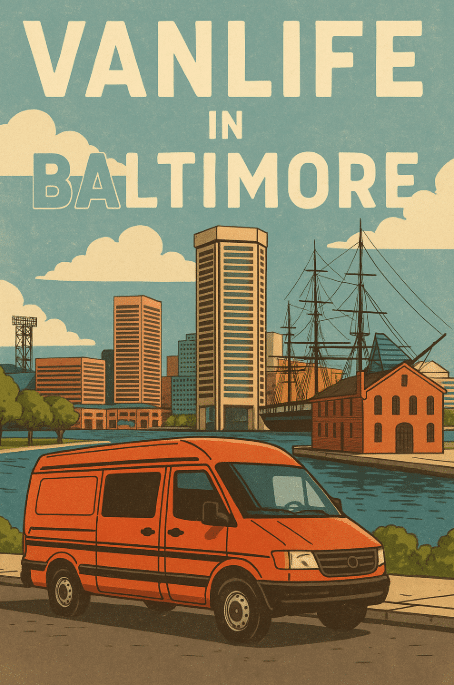“The Ultimate Overlanding Guide to the Pacific Northwest: Trails, Gear & Van Setup Tips”
“The Ultimate Overlanding Guide to the Pacific Northwest: Trails, Gear & Van Setup Tips”
Welcome to the wild heart of the Pacific Northwest.
If you’re dreaming of fog-draped forests, rugged mountain passes, and coastal backroads — all from the driver’s seat of your 4×4 or camper van — this guide is for you.
Whether you roll in a lifted Econoline, a kitted-out Sprinter, or a Tacoma with a rooftop tent, the Pacific Northwest (PNW) offers some of the most iconic overlanding terrain in North America. But it’s also wildly diverse, unpredictable, and hard on gear — so preparation is key.
Let’s dig into the best trails, gear, and vehicle setup tips for thriving on (and off) the grid in Washington, Oregon, and British Columbia.
🌲 Top Overlanding Routes in the Pacific Northwest
🛻 1. Washington Backcountry Discovery Route (WABDR)
-
Length: ~575 miles
-
Difficulty: Moderate (some sections require 4WD)
-
Best Season: July–September
-
This legendary route stretches from the Oregon border to Canada, covering remote forests, rugged ridgelines, and scenic alpine lakes. Bring recovery gear — and a full tank.
🏞 2. Tillamook State Forest, Oregon
-
Best For: Short weekend trips, off-road testing, and forest camping
-
A dense web of logging roads and dispersed campsites make Tillamook an ideal training ground for new overlanders and vanlifers. Be aware: wet weather = mud mayhem.
🏔 3. Sea-to-Sky Corridor, BC
-
From: Vancouver to Pemberton (with detours into Squamish and Whistler)
-
Gorgeous mountain valleys, waterfalls, and forest service roads with challenging spurs for serious rigs. Carry a chainsaw — downed trees are common.
🏕 4. Olympic Peninsula Loop
-
Combine: Hoh Rainforest, Lake Crescent, and coastal routes
-
Terrain: Mossy, magical, and often misty — 100% PNW
-
Perfect for sprinter vans and 2WD rigs if you stick to paved forest roads. Plenty of camping, especially if you’re self-contained.
🔧 Must-Have Gear for PNW Overlanding
The Pacific Northwest is known for sudden weather shifts, remote terrain, and limited cell service. Here’s what you can’t afford to skip:
-
Recovery kit: traction boards, snatch strap, tire repair, and a quality air compressor
-
Rainproof awning and ground tarp – trust us, the moss is not just for looks
-
Water filtration system – rivers and streams are plentiful but not always clean
-
12V Fridge or Cooler – wildlife-safe food storage is a must
-
Auxiliary lighting – trails get dark fast in the dense forest
🛠 Want to build your loadout? Check out our Gear Guides or visit the Shop.
🚐 Best Vanlife Setup Tips for the PNW
Whether you drive a Mercedes Sprinter 4×4, Ford Econoline, or something custom, here’s how to optimize your rig for overlanding in the Pacific Northwest:
✅ 1. Insulate for moisture
Rain = condensation. Use closed-cell foam and vapor barriers, and don’t skimp on a roof vent with fan.
✅ 2. Get off-grid power
Solar is essential here, but pair it with a DC-DC charger or small generator — cloudy days are the norm.
✅ 3. Carry a backup heater
A diesel or gas hydronic heater like the Aqua-Hot 125D is ideal for cold nights. Even in July.
✅ 4. Modular water system
A 20–30 gal onboard tank + outdoor rinse spigot = win. You’ll want to clean your gear, pets, and sometimes yourself.
🌐 Final Thoughts: Adventure Awaits
The Pacific Northwest is one of the most rewarding — and challenging — regions for overlanding and vanlife. It demands a bit more preparation, a bit more patience, and a whole lot of curiosity.
At Northwest Overland, we’re here to help you build the rig, find the trail, and brew the coffee when you get there.
Want more?
-
Subscribe to our newsletter
-
Follow us on Instagram [@northwestoverland]
-
Share your rig and story for a chance to be featured!
Safe travels, and see you on the trail.
— The Northwest Overland Crew





